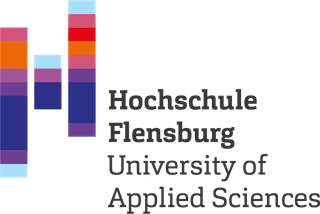Abstract
This paper describes how MT is integrated into a course project in the Master programme of the International Technical Communication course of study at Flensburg University of Applied Sciences. The students who are participating in the MA programme can choose to study full-time or part-time, i.e. all courses are being taught as distance learning courses and in-class courses alternately. This concept is one of the reasons that the students are very different/diversified regarding their professional background, their age, years of working experience etc. Some students have already been working as translators for years or decades others have just finished a BA programme as a technical writer or translator, and again others have so far been working as engineers or teachers.
This aspect produces very interesting comments in the chat room and/or in class as well as in the results of their work and in their final reports. An observation that one can make and that can be seen as a side-effect when students who have such varying curricula and different professions who are working together is, that their view onto the actual project work is fairly different as well. While technical writers nowadays have a focus on controlling the language prior to the actual writing process, technical translators do not have in mind that the source texts they have to use as working basis, follow any rules at all. This may be because of the negative experiences technical writers have made in the past regarding the quality of the source texts. However, this is an additional outcome of the course and mentioned here, yet it is not intended to be examined in detail in this article.
The course project is based on the idea of combining controlled language and a pre-editing step in order to achieve an effective way to prepare contemporary technical documentation for rule-based machine translation (RBMT). I will explain what I mean by “contemporary” within the context of technical documentation and why this attribute plays an important role within the decision-making process to integrate CL, pre-editing and MT in the course project, which also includes practical exercises for the students. In addition, the reason why RBMT is the MT method chosen within the context of multilingual text production is explained.
Zitieren
1.
Wittkowsky M. Rule-based machine translation in a student project. European Academic Colloquium on Technical Communication. 2016;4:13.
Wittkowsky, M. (2016). Rule-based machine translation in a student project. European Academic Colloquium on Technical Communication. Berlin: European Association for Technical Communication – tekom Europe e. V. und Elisabeth Gräfe. Stuttgart: tcworld.
Wittkowsky, Marion. 2016. „Rule-based machine translation in a student project“. European Academic Colloquium on Technical Communication. Berlin: European Association for Technical Communication – tekom Europe e. V. und Elisabeth Gräfe. Stuttgart: tcworld.
Wittkowsky, Marion. „Rule-based machine translation in a student project“. European Academic Colloquium on Technical Communication 2016: 13. Print.
Wittkowsky, Marion. „Rule-based machine translation in a student project“. European Academic Colloquium on Technical Communication, 1. Aufl., Bd. 4, European Association for Technical Communication – tekom Europe e. V. und Elisabeth Gräfe. Stuttgart: tcworld, 2016, S. 13.
Details
-
Edition
1 -
Volume
4 -
Number of Pages
13 -
Publisher
European Association for Technical Communication – tekom Europe e. V. und Elisabeth Gräfe. Stuttgart: tcworld -
Conference Location
Berlin -
ISSN Number
2196-6206 -
ISBN Number
978-3-944449-78-4 (Softcover), 978-3-944449-46-3 (E-Book PDF)
